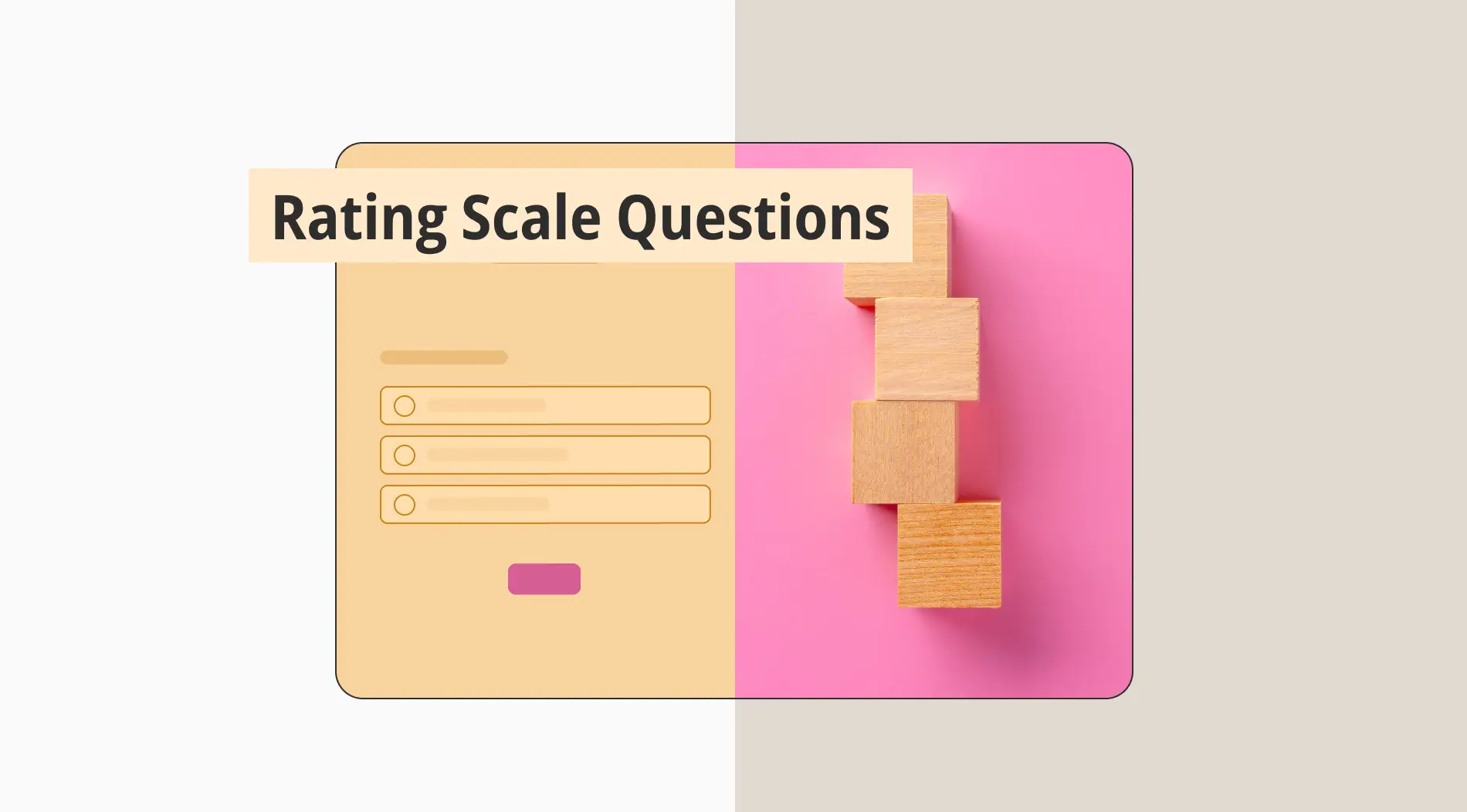One of the best ways to get organized input is by using rating scale questions in a survey. These questions give easy-to-analyze quantitative data by asking respondents to score their experience, satisfaction, or opinion on a numerical or descriptive point scale. Using rating scales for staff appraisals, customer satisfaction surveys, or product evaluations is straightforward yet effective.
In this post, we will go over important pointers for creating accurate and clear rating scale questions. We'll give you free templates and useful examples to help you design surveys that yield insightful and useful data. These materials can improve your efforts to gather feedback, regardless of your experience with rating scales or your desire to improve your methodology.
What is a rating scale question?
A rating scale question is a type of survey question that asks respondents to evaluate something by assigning it a value on a predefined scale.
Typically, this scale uses either numbers (e.g., 1 to 5 or 1 to 10) or descriptive descriptors (e.g., terrible to exceptional) to indicate the range from low to high, or both.
In order to gauge attitudes, views, satisfaction levels, or the extent of agreement with a given statement, rating scale questions are utilized. They offer quantitative information that is readily evaluated to spot patterns, inclinations, or opportunities for development.
When to use rating scale questions?
In many situations where measurable input is necessary for evaluation and development, these types of questions are useful instruments. They work especially well for recording in-depth analyses in a variety of contexts, including:
⏰ Customer service feedback: Following a conversation with a customer support service representative, businesses may request that clients rank their encounter on a 1–5 scale, evaluating aspects such as politeness, helpfulness, and problem-solving skills.
⏰ Course evaluation: Upon completion of a training or educational course, participants may be requested to provide a rating on a scale of 1 to 5 for the overall learning experience, teacher effectiveness, and material quality.
⏰ Website usability surveys: To enhance user experience, website visitors may be asked to score the site's usability, loading speed, and design aesthetics on a scale of 1 to 10.
⏰ Event feedback: After a conference or webinar, attendees may be asked to rate various aspects of the event, such as content relevance, speaker quality, and overall organization.
⏰ Employee engagement surveys: Employers may use employee engagement surveys to gauge how satisfied their workers are with their workplace by asking employees to score their sense of worth on a scale from 1 to 10.
4 Types of rating scales
Rating scale questions are crucial for quantifying and assessing respondents' experiences and opinions when creating surveys and feedback forms. Rating scales facilitate the collection of consistent and comparable data that may be examined for insights and motivation for change. Choosing and comprehending the right rating system is essential to getting precise and useful feedback.
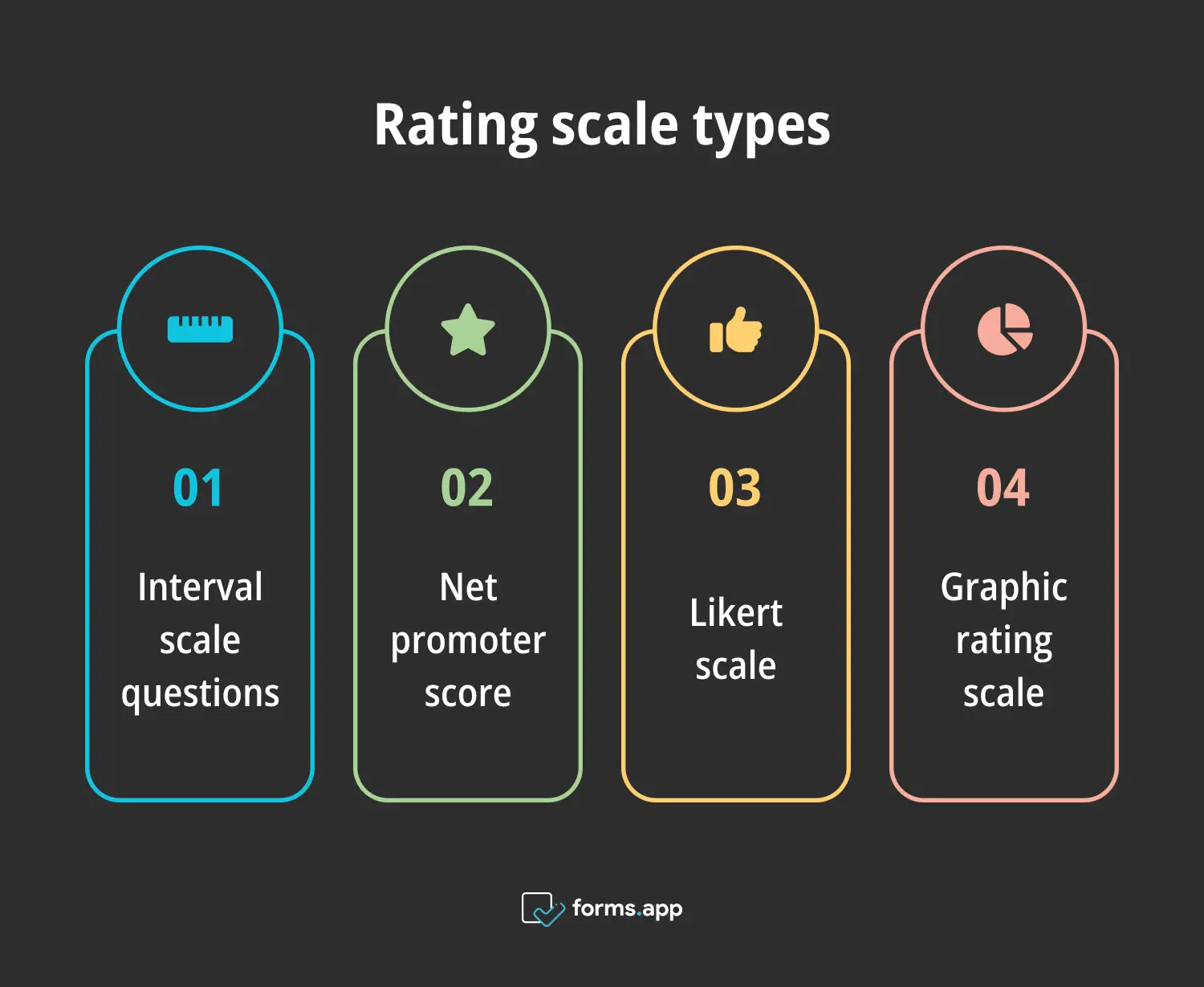
Rating scale types
1. Interval scale questions
Survey questions that measure variables along a scale without a genuine zero point but with equal gaps between values are known as interval scale questions. These questions enable the evaluation of answer disparities by providing both order and constant spacing between survey response possibilities. They are frequently employed in surveys where determining the extent of item variances is desired.
2. Net promoter score (NPS)
Customer recommendation of a product or service to others is gauged by the Net Promoter Score (NPS), which is commonly expressed on a 0–10 scale, with 0 representing "not likely" and 10 representing "extremely likely."
3. Likert scale
One of the most often used kinds of rating scales is the Likert scale. The method of measuring attitudes or opinions involves asking respondents to select a response on a continuum, usually ranging from "Strongly disagree" to "Strongly agree." For more detailed data collecting, 5-point, 7-point, or even 9-point scales might be included in its design.
4. Graphic rating scale (GRS)
Respondents use a graphic scale to give their rating on the Graphic Rating Scale (GRS). Consider a smiley face scale, where the various expressions stand for varying degrees of emotion or satisfaction.
45+ Rating scale question examples
Surveys may be used to collect opinions, attitudes, and responses in an organized manner by using rating scale questions, which are a flexible tool. We've compiled an extensive selection of more than forty-five rating scale question examples in this area. These examples of rating scale survey questions will assist you in creating surveys that work well in a variety of settings and yield insightful data that can be put to use.
Rating scale for interview questions
A rating scale for interview questions is an organized instrument for evaluating and quantifying a candidate's answers based on predetermined criteria. Interviewers can more effectively assess and compare applicants' abilities, performances, and qualities using rating scales. We have listed sample rating scale interview questions for your inspiration:
1. How well do you demonstrate the ability to work within a team?
2. Rate your leadership in handling challenging situations.
3. How adept are you at anticipating and mitigating potential risks in your solutions?
4. Rate your proficiency in the required technical skills.
5. How well do you meet the job’s specific qualifications?
6. Rate your ability to stay productive during periods of uncertainty.
7. How effectively do you support others in achieving team goals?
8. How open are you to feedback and change?
9. Rate your proficiency in managing job-related projects from start to finish.
10. Rate your skill in building and maintaining trust among team members.
11. How well do you show respect for diverse viewpoints?
12. Rate your skill in evaluating and improving job-specific processes and workflows.
13. How well do you identify the root causes of problems?
14. How well do you contribute to advancing industry practices and standards through your work?
15. Rate your ability to use specialized tools or equipment relevant to your job.
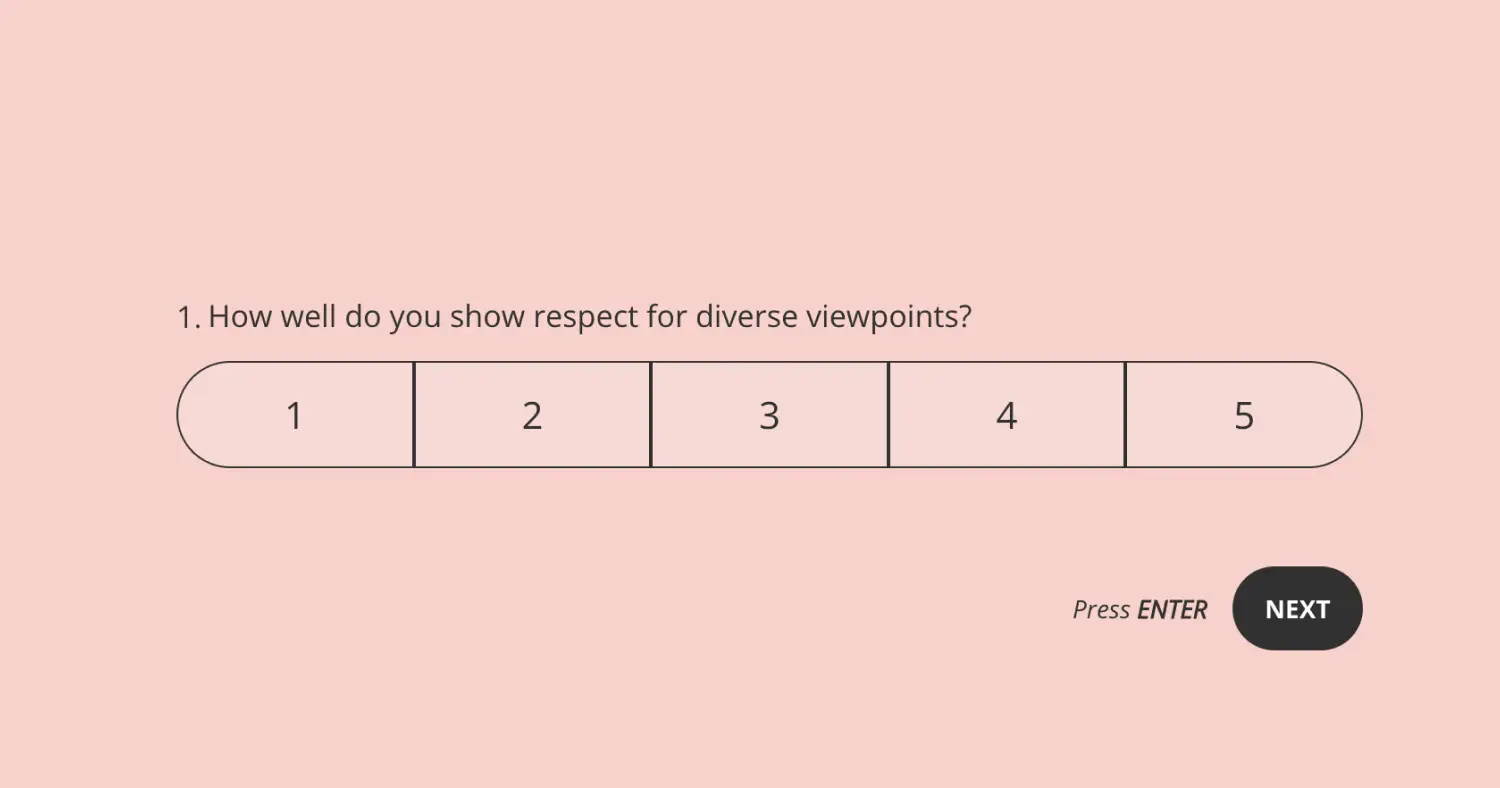
A rating question example for interviews
Rating scale questions for customer service
An organized instrument for measuring and assessing different facets of the customer service experience is a rating scale for inquiries. To methodically evaluate and measure customer experience entails giving numerical numbers or descriptive evaluations of many components, such as response options, clarity, and professionalism.
16. How satisfied are you with the range of support options provided by customer service?
17. Rate the professionalism of the customer service representative you interacted with.
18. How effectively did the customer service representative manage your complaint?
19. Rate the ease of accessing customer service through the available channels.
20. Rate the customer service representative's ability to provide timely updates on your issue.
21. How likely are you to contact customer service again for future needs?
22. Rate the customer service representative's ability to remain calm and composed during the interaction.
23. Rate your satisfaction with the response time from customer service.
24. How likely are you to rate your experience with our customer service as positive?
25. Rate the accuracy of the solution provided by customer service.
26. How satisfied are you with the follow-up actions taken by customer service?
27. How effectively did customer service address any additional questions or concerns you had?
28. How likely are you to recommend our customer service to others?
29. How satisfied are you with the problem-solving skills of the customer service representative?
30. How well did the customer service representative handle multiple issues or requests during your interaction?
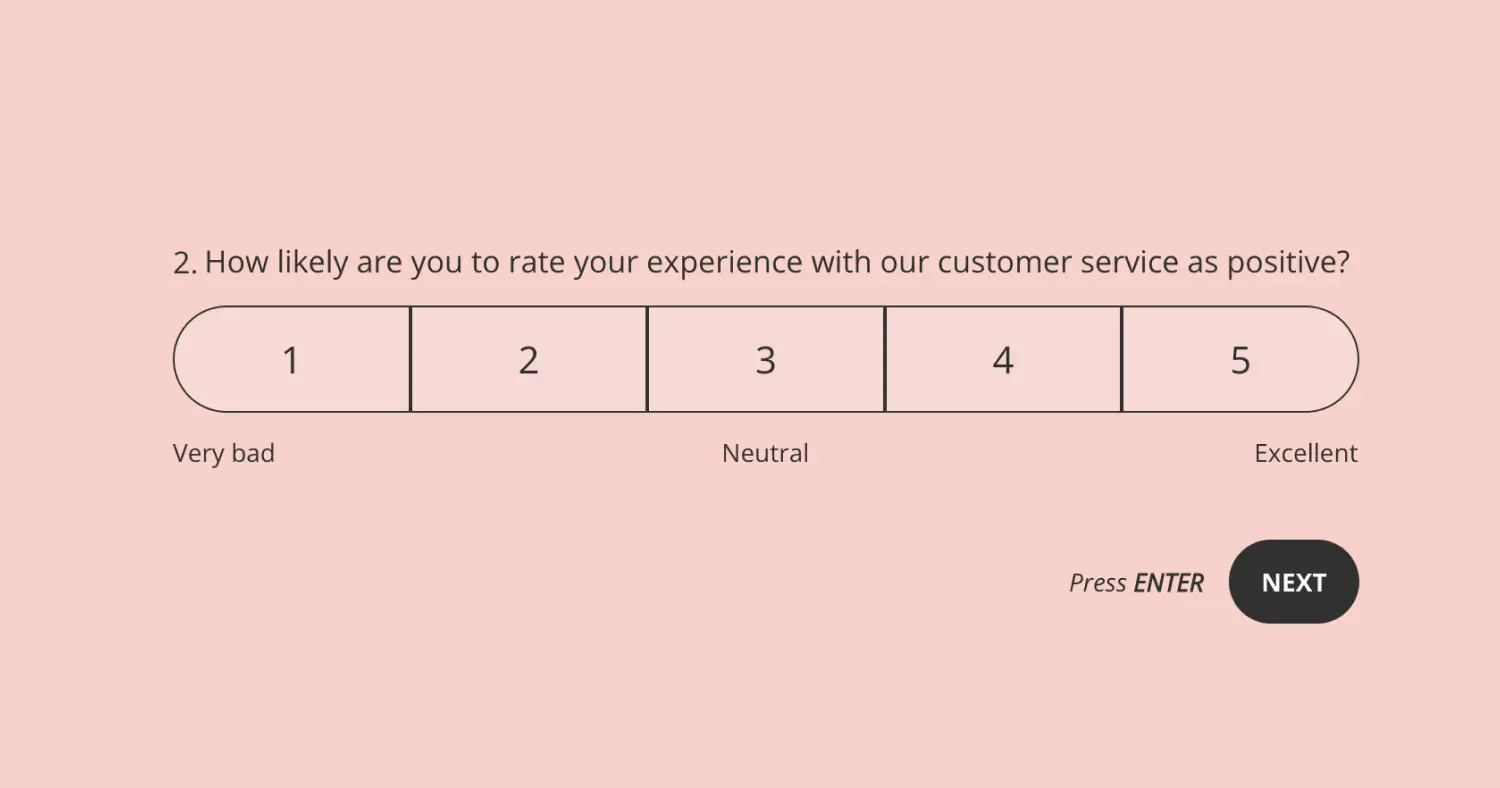
A rating question example for customer service
Product feedback rating scale questions
Product performance, design, and usability may all be assessed using structured questions on a product's feedback rating scale. To gauge their level of satisfaction and pinpoint development opportunities, respondents score their experiences on pre-established scales that may include labels with descriptive values or numeric scales.
31. Rate the product’s ease of use.
32. How likely are you to recommend this product to others?
33. How satisfied are you with the product’s durability?
34. Rate the product’s impact on your daily life or routine.
35. Rate the value for money of the product.
36. Is it easy to find replacement parts or accessories for the product?
37. Rate the reliability of the product in its day-to-day use.
38. How well does the product fulfill its advertised benefits and claims?
39. Rate the level of innovation demonstrated by the product.
40. How well does the product’s performance justify its features and specifications?
41. Rate the product’s ability to provide consistent results.
42. How satisfied are you with the product’s packaging?
43. How satisfied are you with the product’s warranty or guarantee terms?
44. Rate the product’s ability to maintain its performance over time.
45. Rate the product’s appearance and aesthetics.
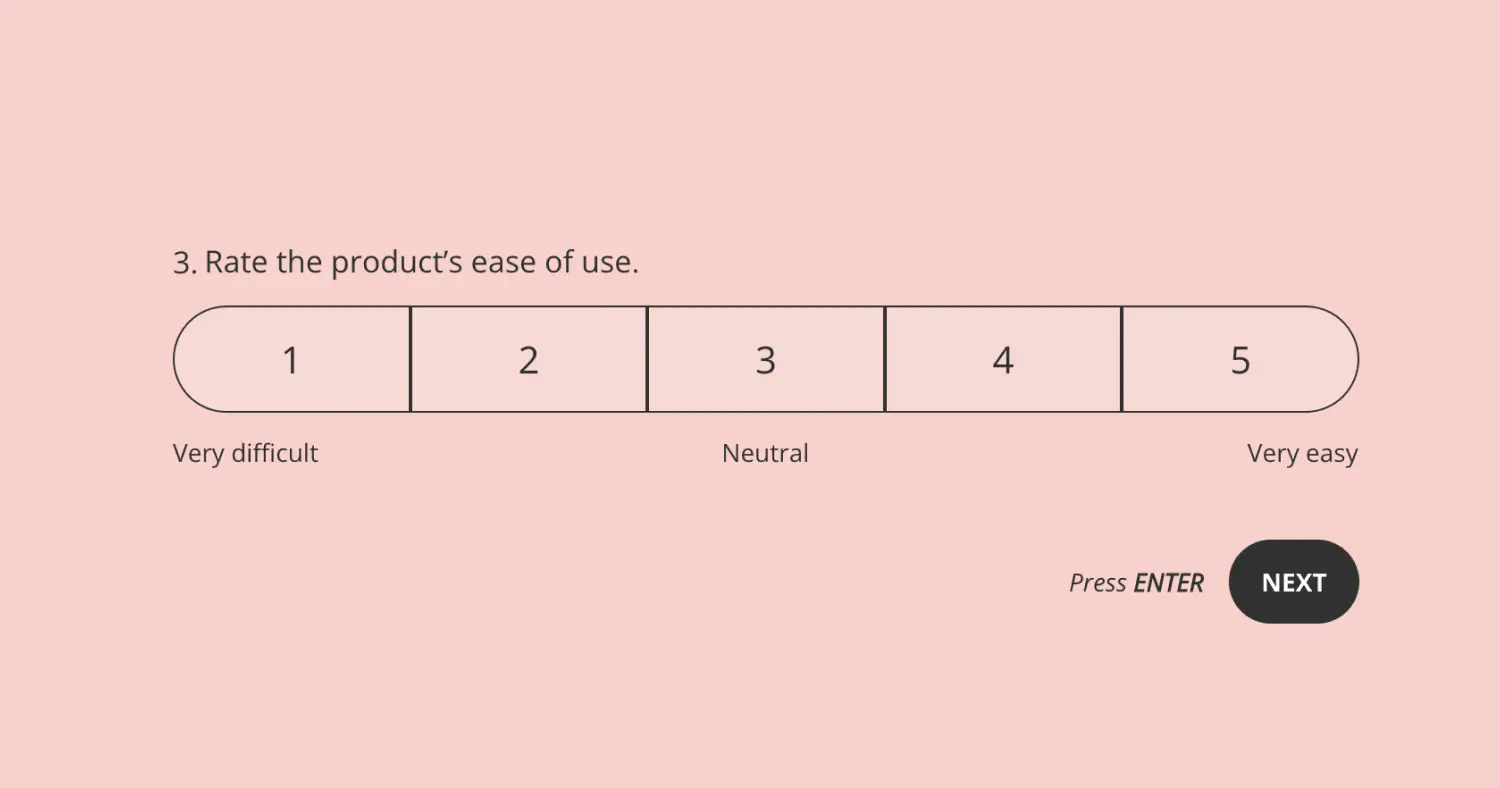
A rating question example for product feedback
How to ask rating scale questions using forms.app
It is easy and quick to create efficient rating scale questions for your surveys with an online survey platform like forms.app. The user-friendly interface of forms.app makes it simple to create and distribute surveys that get insightful responses from participants.
You may create rating scale questions on forms.app by following this comprehensive tutorial, which also includes advice on how to build up precise, unambiguous scales and how to modify questions to suit your needs.
1. Register or sign in
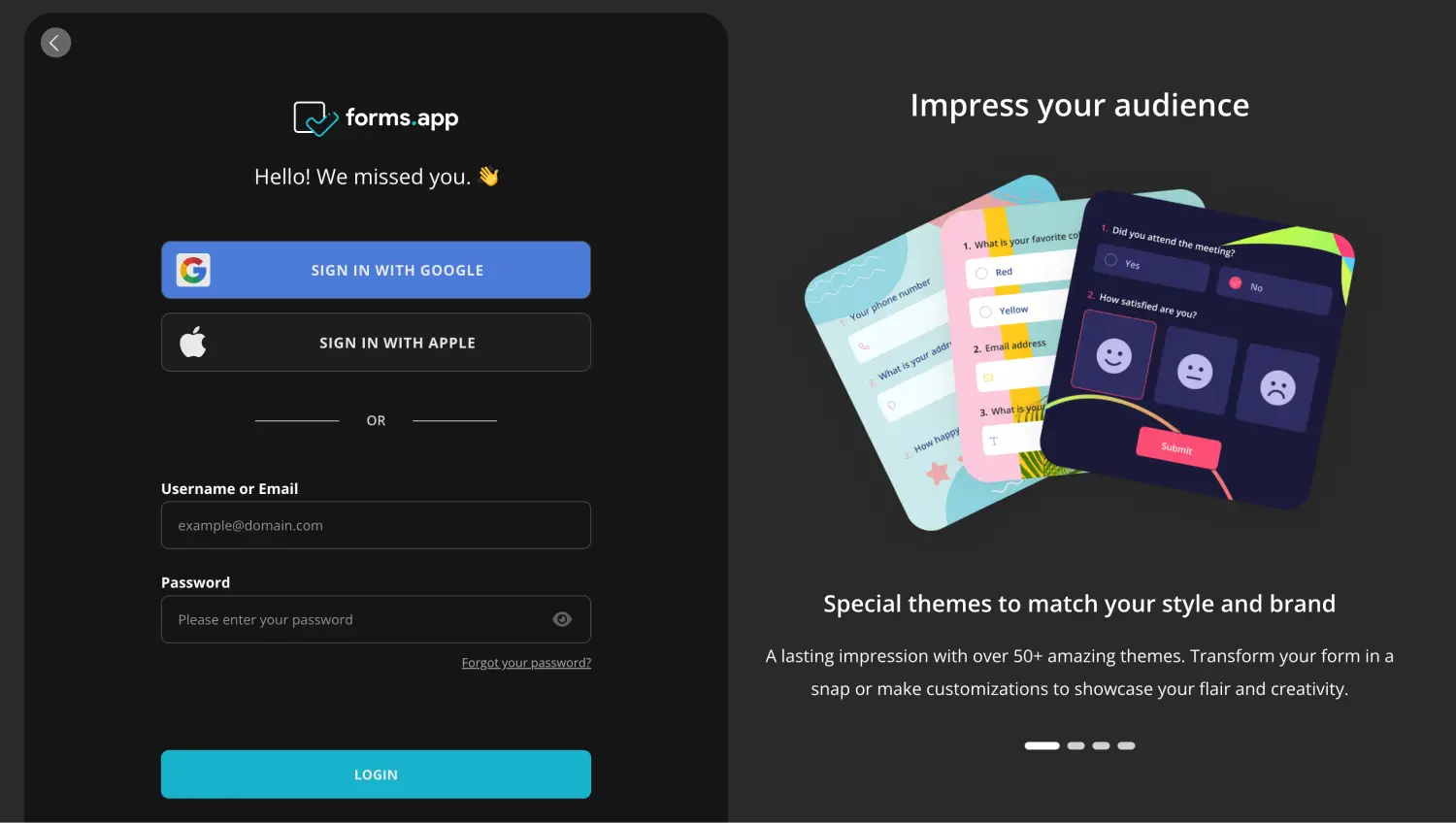
Open your forms.app account
To get started, choose between creating a new account and logging into your current forms.app account.
2. Select a template
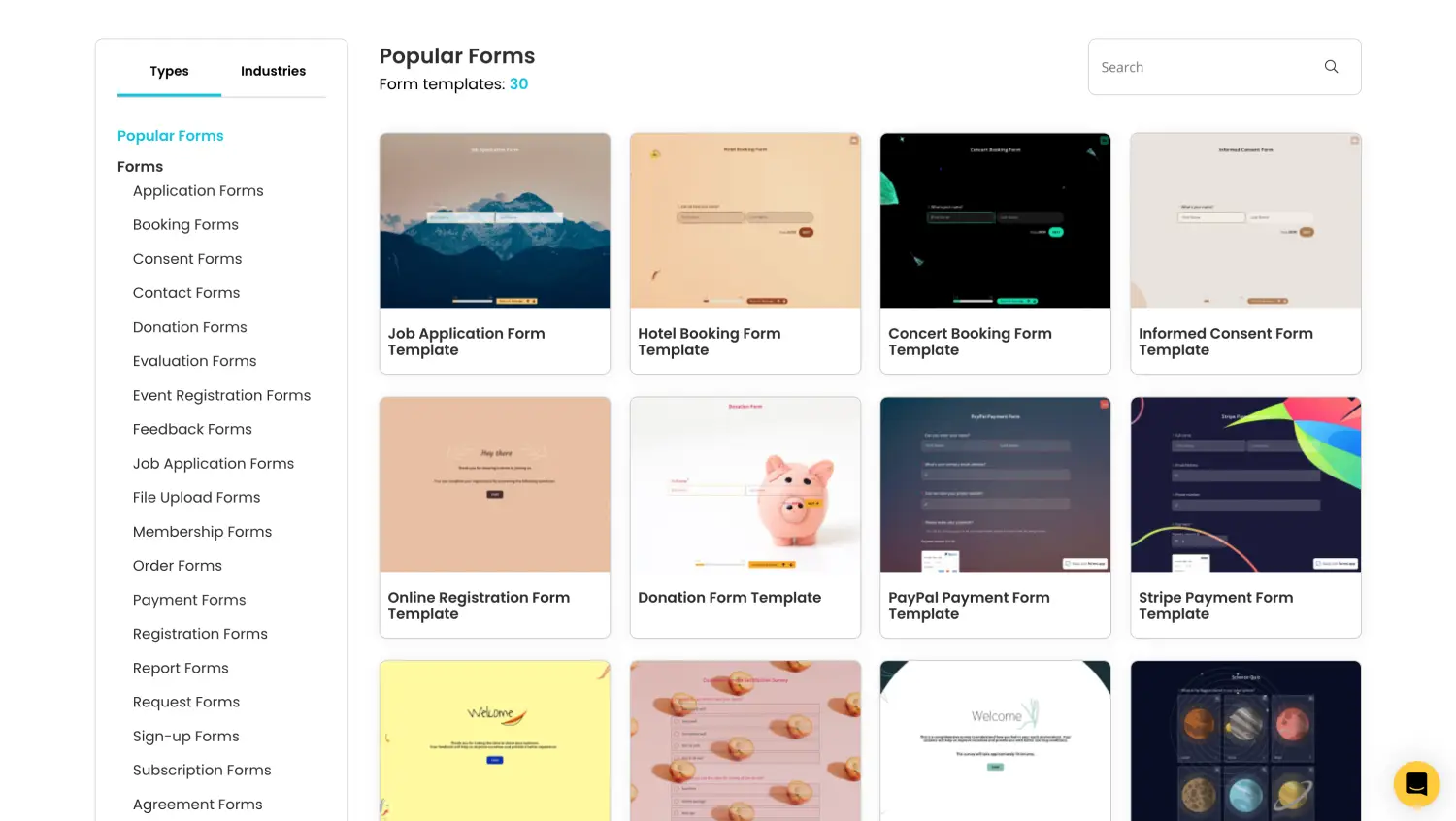
Choose a template
Select a pre-made survey template with rating scale questions, or begin with a blank form to customize your survey from scratch.
3. Use AI feature
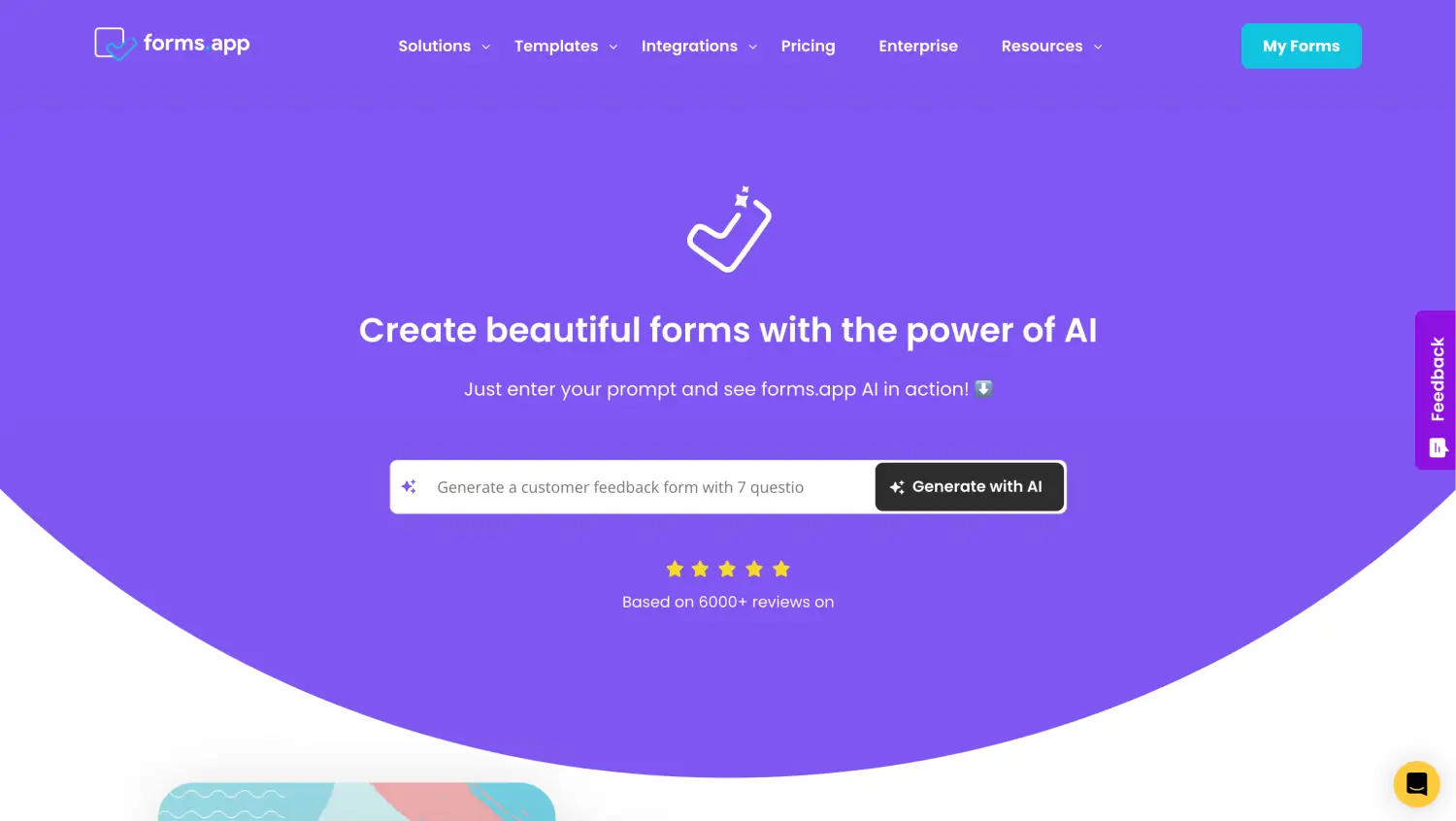
Generate your form with AI
Use forms.app's AI-powered capabilities to automatically customize the form to your needs, enabling you to swiftly edit and optimize the content in accordance with your unique specifications.
4. Add rating scale questions
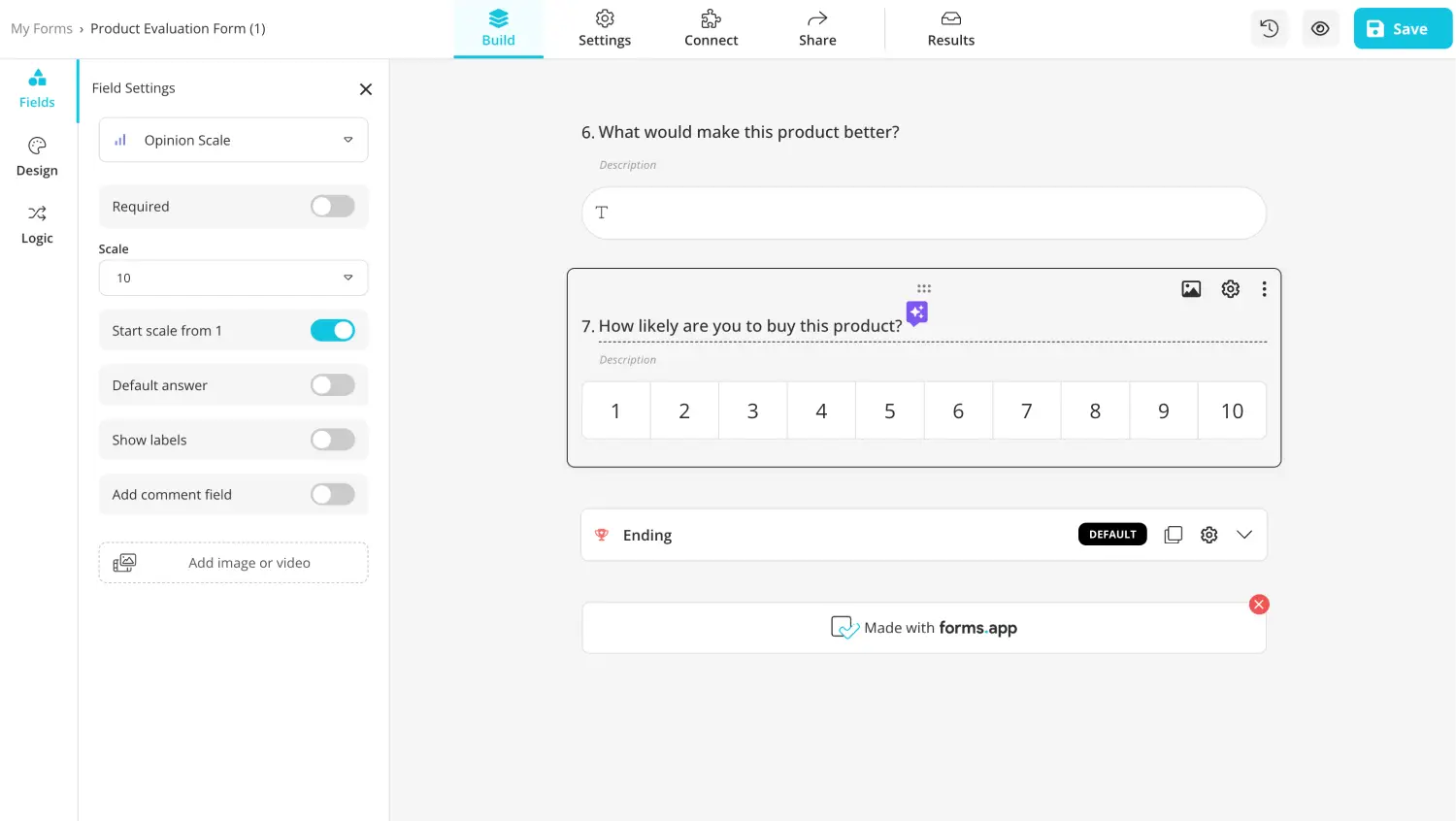
Add the rating questions
Choose the "Rating Scale" question type from the possibilities to include rating scale questions. Make the scale unique to your needs—for example, a 1–10 or 1–5 scale—and include labels for the various degrees of pleasure or agreement. Using the drag-and-drop feature, you can add different questions, such as multiple-choice or open-ended questions.
5. Share the survey
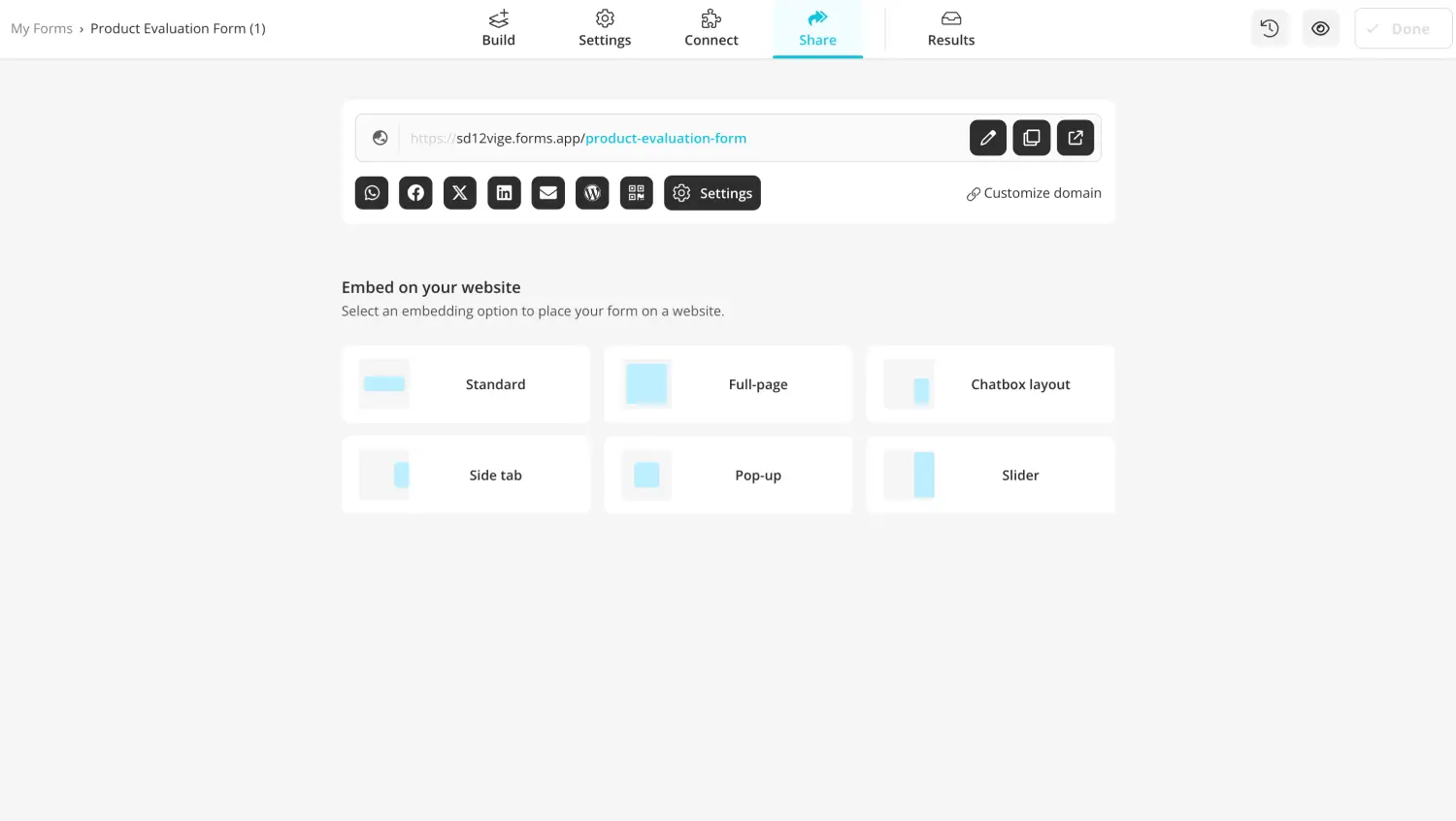
Share your form
Once your survey is complete, you can ensure it reaches the people you want it to by distributing it in several ways. E-mail the survey link to others, post it on social media to increase its awareness, or include it on your website to encourage participation and quick access.
3 expert tips for rating scale questions
Effective rating scale questions are essential for gathering meaningful feedback. Here are three expert tips to enhance your survey:
🔑 Establish clear and specific scales: Make sure your rating systems are precise and well-defined. For example, specify what each point signifies rather than use a nebulous scale like 1 to 5. One way to define a scale from 1 to 5 would be:
🔑 Ensure relevance to the respondent's experience: Make your rating scale questions relevant to the respondent's own experiences. Ensure that every question pertains directly to the part of the experience, service, or product you are assessing.
🔑 Provide a "Don't Know" or "Not Applicable" option: Provide a "Don't Know" or "Not Applicable" option for inquiries where respondents might not have sufficient expertise or knowledge to rate the item. This avoids pressuring participants to give false or deceptive assessments.
Wrapping it up
Including rating scale questions in your surveys is an effective approach to obtaining concise, useful feedback in various settings. You may design surveys that yield valuable insights by defining accurate scales, making sure the questions are relevant to the respondents' experiences, and offering choices to those unsure about their answers.
When you use these techniques, your data will be of higher quality, and you will be able to make well-informed decisions, whether measuring staff engagement, appraising goods, or consumer happiness.
Ayşegül is a content writer at forms.app and a full-time translation project manager. She enjoys scrapbooking, reading, and traveling. With expertise in survey questions and survey types, she brings a versatile skill set to her endeavors.
